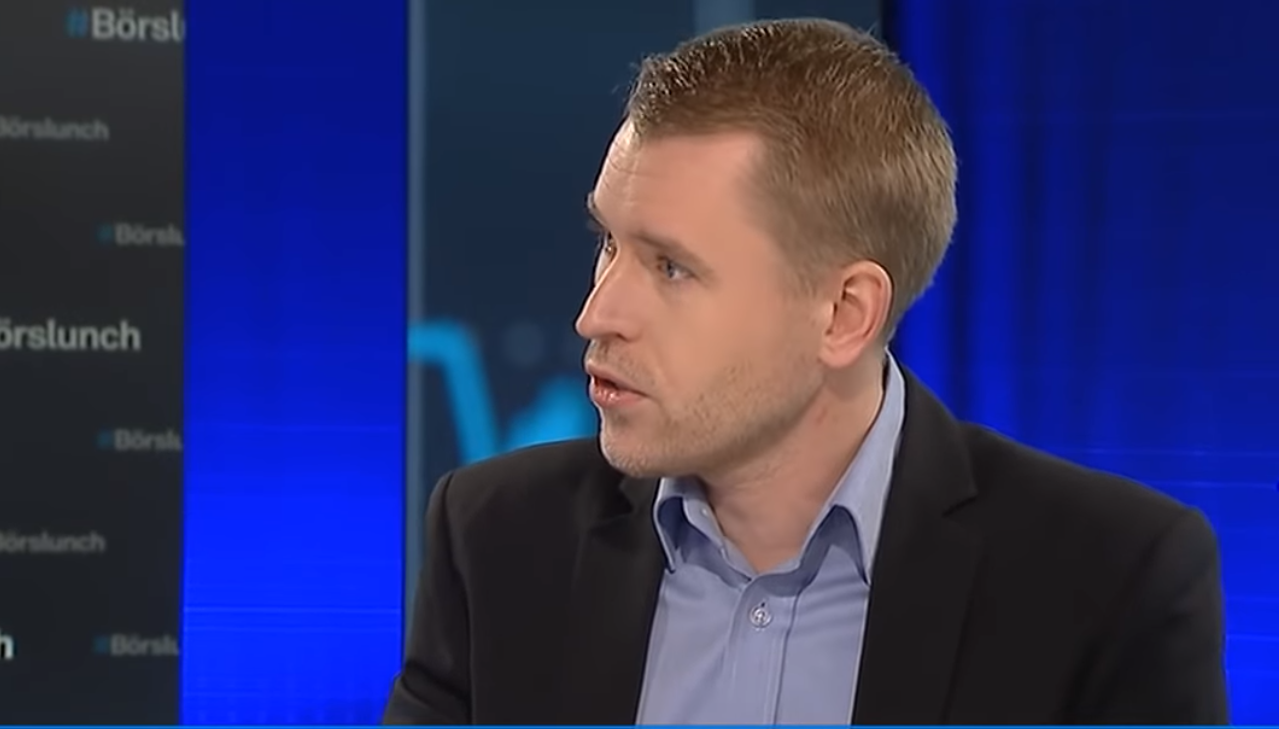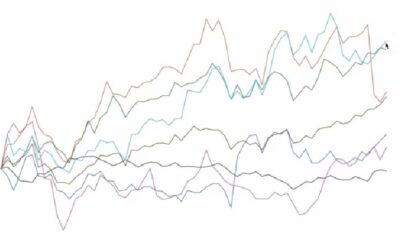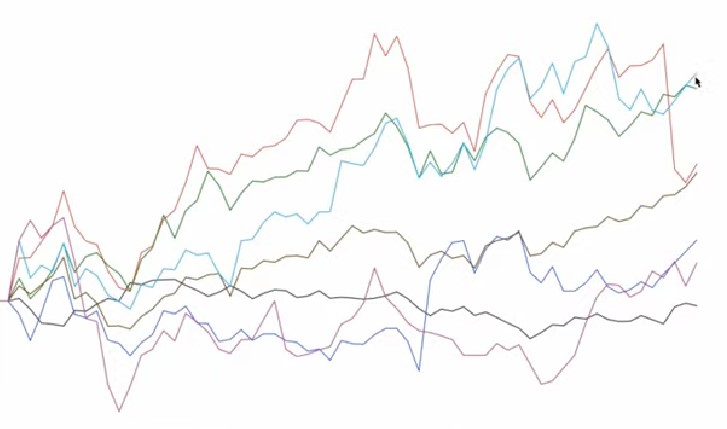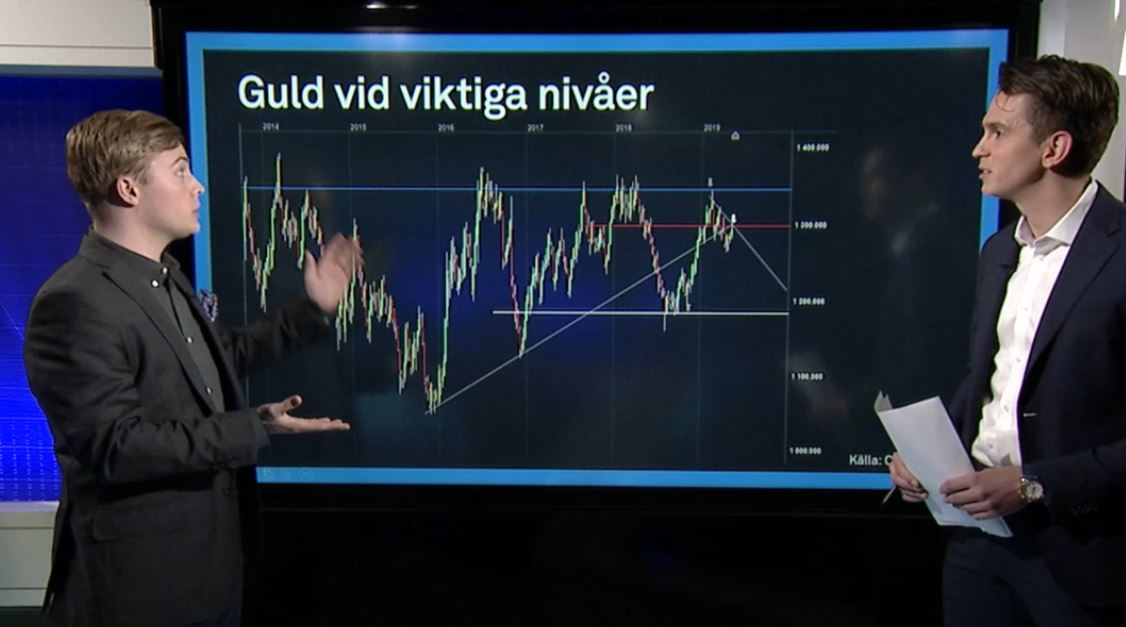Analys från DailyFX
A GBP/JPY Set-up That Literally Requires a Second Look
Talking Points:
- Unsuspecting Weekly Uptrend in GBP/JPY
- 2 Dueling Scenarios on the Daily Chart
- The Viable Trade Set-up That Ultimately Wins Out
Occasionally, some patterns will arise that will fool traders because they fail to examine the trade from multiple perspectives. Today’s set-up in GBPJPY may well be one of those cases.
The weekly chart below reveals an innocent-looking uptrend that would cause many traders to want to ride the continuation pattern up.
Guest Commentary: Unsuspecting Weekly Uptrend in GBP/JPY
However, a stumbling block occurs on the below daily chart. Pure chart pattern readers will readily see the triangle that is forming, and this would be considered an opportunity to ride it up to test the highs. While this view is certainly valid, there is an alternative interpretation to the following scenario.
Guest Commentary: Daily Triangle Pattern in GBP/JPY
Alternatively, Elliott wave theory suggests that there are typically five waves in any triangle pattern. Each wave is comprised of two legs in the direction of the overall wave, as shown below.
Guest Commentary: Elliott Wave Scenario for GBP/JPY
As seen, Elliott wave theory readily suggests that the move down is not yet complete, and these conflicting scenarios on the daily chart of GBPJPY cast doubt over the pair’s prevailing direction. However, practical traders will see a justifiable opportunity to take a short trade at what might be the “b” high of wave three.
In order to obtain a better entry, however, the four-hour chart below has to be considered. Here, resistance is easily obtainable using previous price action. If price can break past the zone of resistance indicated, then chances are good that the first scenario (i.e. price will continue heading up) will turn out correct.
Guest Commentary: Key Resistance Zone for GBP/JPY
Ultimately, it is up to the market to decide, but this is a valid trade nonetheless. The only factor going significantly against it thus far is the fact that it is fighting a larger uptrend on the higher time frames. Still, even a move down towards the rising line of support on the daily chart would produce a move in excess of 300 pips.
As seen on the four-hour chart, the exact resistance zone has been estimated as 170.46-170.96. This represents a risk zone of only 50 pips, which makes the overall risk profile more than adequate for this trade.
The entry should be taken on the hourly chart (not shown), and viable triggers would be the usual suspects, which include bearish engulfing patterns, pin bars, and/or bearish reversal divergence.
As always, two or three attempts may be required to effectively hop on to this move, but no more than that, as this is a countertrend move, afterall.
By Kaye Lee, private fund trader and head trader consultant, StraightTalkTrading.com
Analys från DailyFX
EURUSD Weekly Technical Analysis: New Month, More Weakness
What’s inside:
- EURUSD broke the ‘neckline’ of a bearish ‘head-and-shoulders’ pattern, April trend-line
- Resistance in vicinity of 11825/80 likely to keep a lid on further strength
- Targeting the low to mid-11600s with more selling
Confidence is essential to successful trading, see this new guide – ’Building Confidence in Trading’.
Coming into last week we pointed out the likelihood of finally seeing a resolution of the range EURUSD had been stuck in for the past few weeks, and one of the outcomes we made note of as a possibility was for the triggering of a ’head-and-shoulders’ pattern. Indeed, we saw a break of the ’neckline’ along with a drop below the April trend-line. This led to decent selling before a minor bounce took shape during the latter part of last week.
Looking ahead to next week the euro is set up for further losses as the path of least resistance has turned lower. Looking to a capper on any further strength there is resistance in the 11825-11880 area (old support becomes new resistance). As long as the euro stays below this area a downward bias will remain firmly intact.
Looking lower towards support eyes will be on the August low at 11662 and the 2016 high of 11616, of which the latter just happens to align almost precisely with the measured move target of the ‘head-and-shoulders’ pattern (determined by subtracting the height of the pattern from the neckline).
Bottom line: Shorts look set to have the upperhand as a fresh month gets underway as long as the euro remains capped by resistance. On weakness, we’ll be watching how the euro responds to a drop into support levels.
For a longer-term outlook on EURUSD, check out the just released Q4 Forecast.
EURUSD: Daily
—Written by Paul Robinson, Market Analyst
You can receive Paul’s analysis directly via email bysigning up here.
You can follow Paul on Twitter at@PaulRobinonFX.
Analys från DailyFX
Euro Bias Mixed Heading into October, Q4’17

Why and how do we use IG Client Sentiment in trading? See our guide and real-time data.
EURUSD: Retail trader data shows 37.3% of traders are net-long with the ratio of traders short to long at 1.68 to 1. In fact, traders have remained net-short since Apr 18 when EURUSD traded near 1.07831; price has moved 9.6% higher since then. The number of traders net-long is 15.4% lower than yesterday and 16.4% higher from last week, while the number of traders net-short is 0.4% higher than yesterday and 10.5% lower from last week.
We typically take a contrarian view to crowd sentiment, and the fact traders are net-short suggests EURUSD prices may continue to rise. Positioning is more net-short than yesterday but less net-short from last week. The combination of current sentiment and recent changes gives us a further mixed EURUSD trading bias.
— Written by Christopher Vecchio, CFA, Senior Currency Strategist
To contact Christopher Vecchio, e-mail cvecchio@dailyfx.com
Follow him on Twitter at @CVecchioFX
To be added to Christopher’s e-mail distribution list, please fill out this form
Analys från DailyFX
British Pound Reversal Potential Persists Heading into New Quarter

Why and how do we use IG Client Sentiment in trading? See our guide and real-time data.
GBPUSD: Retail trader data shows 38.2% of traders are net-long with the ratio of traders short to long at 1.62 to 1. In fact, traders have remained net-short since Sep 05 when GBPUSD traded near 1.29615; price has moved 3.4% higher since then. The number of traders net-long is 0.1% higher than yesterday and 13.4% higher from last week, while the number of traders net-short is 10.6% lower than yesterday and 18.3% lower from last week.
We typically take a contrarian view to crowd sentiment, and the fact traders are net-short suggests GBPUSD prices may continue to rise. Yet traders are less net-short than yesterday and compared with last week. Recent changes in sentiment warn that the current GBPUSD price trend may soon reverse lower despite the fact traders remain net-short.
— Written by Christopher Vecchio, CFA, Senior Currency Strategist
To contact Christopher Vecchio, e-mail cvecchio@dailyfx.com
Follow him on Twitter at @CVecchioFX
To be added to Christopher’s e-mail distribution list, please fill out this form
-
Analys från DailyFX10 år ago
EUR/USD Flirts with Monthly Close Under 30 Year Trendline
-
Marknadsnyheter5 år ago
BrainCool AB (publ): erhåller bidrag (grant) om 0,9 MSEK från Vinnova för bolagets projekt inom behandling av covid-19 patienter med hög feber
-

 Marknadsnyheter2 år ago
Marknadsnyheter2 år agoUpptäck de bästa verktygen för att analysera Bitcoin!
-
Analys från DailyFX12 år ago
Japanese Yen Breakout or Fakeout? ZAR/JPY May Provide the Answer
-

 Marknadsnyheter2 år ago
Marknadsnyheter2 år agoDärför föredrar svenska spelare att spela via mobiltelefonen
-
Analys från DailyFX12 år ago
Price & Time: Key Levels to Watch in the Aftermath of NFP
-
Analys från DailyFX8 år ago
Gold Prices Falter at Resistance: Is the Bullish Run Finished?
-

 Nyheter7 år ago
Nyheter7 år agoTeknisk analys med Martin Hallström och Nils Brobacke














